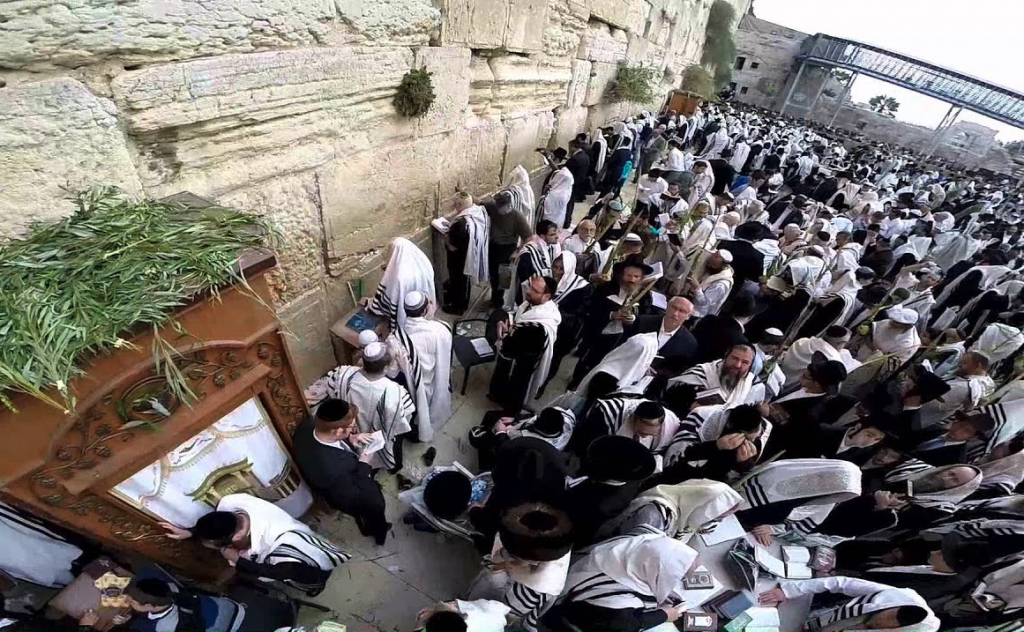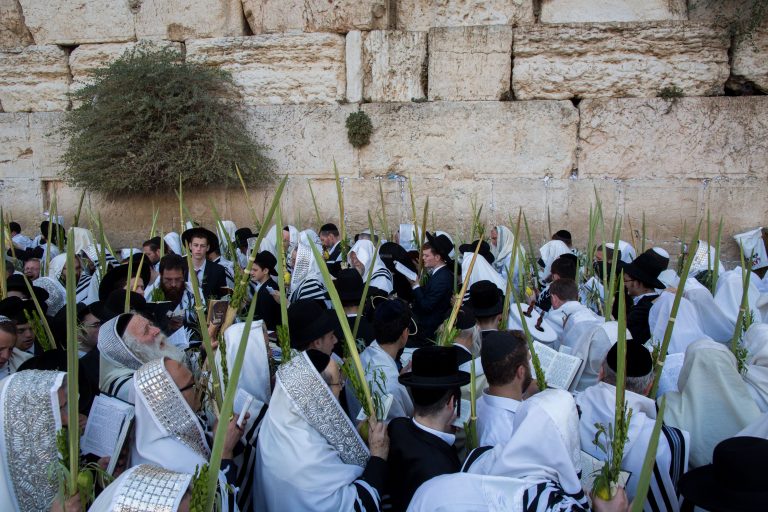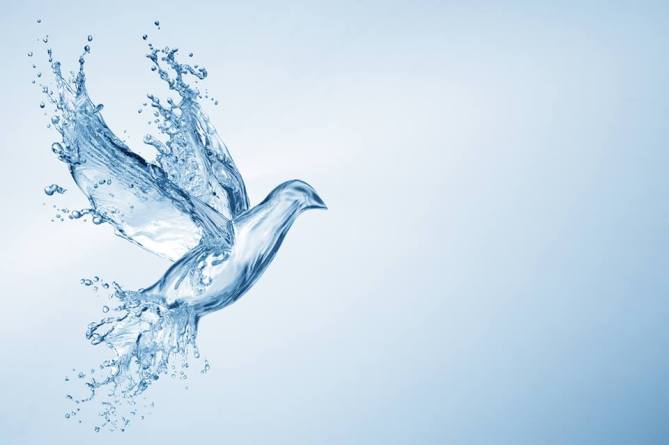Sukkot–The Feast of Booths, Part 3

In John 7, Jesus was residing in Galilee because the Jews in Judea were seeking to kill him. But the Feast of Tabernacles was approaching quickly, and as a required pilgrimage feast, Jesus’ brothers challenged him to go to the feast and present himself openly. Their “challenge” was disingenuous because they did not believe in him. Jesus responded by saying that his “time was not yet come,” but that they (his brothers) could (and should) go to the feast. Hence, Jesus stayed in Galilee for the time being.
(1) After these things Jesus walked in Galilee; for He did not want to walk in Judea, because the Jews sought to kill Him. (2) Now the Jews’ Feast of Tabernacles was at hand. (3) His brothers therefore said to Him, “Depart from here and go into Judea, that Your disciples also may see the works that You are doing. (4) For no one does anything in secret while he himself seeks to be known openly. If You do these things, show Yourself to the world.” (5) For even His brothers did not believe in Him. (6) Then Jesus said to them, “My time has not yet come, but your time is always ready. (7) The world cannot hate you, but it hates Me because I testify of it that its works are evil. (8) You go up to this feast. I am not yet going up to this feast, for My time has not yet fully come.” (9) When He had said these things to them, He remained in Galilee.
[John 7:1–9 NKJV]
Over the course of the next few verses of the narrative, Jesus’ brothers departed for the feast (v.10), and Jesus also went to the feast, but did not show himself openly (v.10). At the midpoint of the feast, Jesus began to teach openly in the Temple (v.14).
Before we get to the pivotal moment, allow me to describe a significant component of Sukkot.
Sukkot is a seven-day feast. The seventh day is known as the “Great Day” of the feast. During the feast, the participants would “re-enact” the Battle of Jericho symbolically. For the first six days of the feast, the High Priest would lead the people in procession around the brazen altar in the courtyard of the Temple. They would march for one circuit only, in silence, as per Joshua 6:3. Then on the seventh day, the final day of the feast, the “Great Day,” the High Priest would first meet the people in the courtyard of the Temple and they would march in procession to the pool of Siloam, where the priest would draw a pitcher of water in a golden pitcher.[1] The crowd would then march in procession back to the Temple courtyard where the High Priest would lead them in seven circuits around the brazen altar. During these circuits the people would recite Psalm 118:25–26, emphasizing, “Lord, save us please!” Upon completion of the seventh circuit, the High Priest would ascend the ramp to the brazen altar and pour the water from the golden pitcher on the altar as a drink offering to the Lord.[2] The people would shout “Hoshana Rabbah” which means “great salvation,” and wave willow branches.

One must imagine that Jesus chose this very specific moment to interrupt this ritual to get the most dramatic effect…
(37) On the last day, that great day of the feast, Jesus stood and cried out, saying, “If anyone thirsts, let him come to Me and drink. (38) He who believes in Me, as the Scripture has said, out of his heart will flow rivers of living water.” (39) But this He spoke concerning the Spirit, whom those believing in Him would receive; for the Holy Spirit was not yet {given}, because Jesus was not yet glorified.
[John 7:37–39 NKJV]

Jesus’ actions reveal a particular form of biblical interpretation called a moed, which means “an appointed time,” or “a rehearsal.” Therefore, Jesus’ actions only makes sense if he interrupted the ritual either exactly when the High Priest was pouring the water, or very close to it. This is the precise purpose of a moed—using a pre-existing person, place, thing, or event, to act as a model of a future reality, to make it easily recognizable.
The ancient Israelites had been celebrating the feast of Tabernacles for centuries. As New Covenant believers we have the benefit of looking backwards and seeing both the type (or model)—the Jews celebrating the feast of Tabernacles–and the antitype (or fulfillment) signified by Jesus’ declaration.
When John the Baptist called Jesus the lamb of God (John 1:29), any reasonably devout Hebrew would have known this was a reference to the Passover lamb. When Jesus said of himself, that he is the bread of life (John 6:35), again, any reasonably devout Hebrew would have known that this was a reference to the unleavened bread eaten during the Feast of Unleavened Bread. When Paul referred to Jesus as the firstfruits from the dead (1 Corinthians 15:20, 23), once more, any devout Hebrew would know that this was a reference to the first sheaf harvested during the feast of Firstfruits. When Jesus used the phrase “living water,” in John 7:38, once again, any reasonably devout Hebrew would have made the connection to the drink offering poured out on the brazen altar on the last day of the Feast of Tabernacles.
This is a stunning fulfillment of a prophetic model because the feast of Tabernacles is considered a picture of the Messianic age, which in some contexts is also known as the “kingdom of heaven”.
For the Jews who did not receive his message at that time (or since), it predicts the indwelling of the Holy Spirit they will receive when they enter into the New Covenant at Christ’s Second Coming.
(24) For I will take you from among the heathen, and gather you out of all countries, and will bring you into your own land. (25) Then will I sprinkle clean water upon you, and ye shall be clean: from all your filthiness, and from all your idols, will I cleanse you. (26) A new heart also will I give you, and a new spirit will I put within you: and I will take away the stony heart out of your flesh, and I will give you an heart of flesh. (27) And I will put my spirit within you, and cause you to walk in my statutes, and ye shall keep my judgments, and do them. (28) And ye shall dwell in the land that I gave to your fathers; and ye shall be my people, and I will be your God.
[Ezekiel 36:24-28 KJV]
For those who received his message at that time, or since, the living water predicted the outpouring of the Holy Spirit his disciples would experience after his death, resurrection, and ascension, allowing us to “taste of the age to come”.

But there is more…
Stay tuned for some amazing details about the water pourer.
[1] Records vary. Some cite a golden pitcher, others a silver pitcher.
[2] The Babylonian Talmud, Sukkah 5:1a–b; Kevin J. Conner, The Feasts of Israel (Portland, OR: BT Publishing, 1980), 86–88. Alfred Edersheim, The Life and Times of Jesus the Messiah: New Updated Edition (Peabody, MA: Hendrickson Publishers, 1993), 582–585. Hagee, His Glory Revealed: A Devotional (Nashville, TN: Thomas Nelson, Inc., Publishers, 1999), 153–155. Howard, Kevin and Marvin Rosenthal. The Feasts of the Lord: God’s Prophetic Calendar from Calvary to the Kingdom (Orlando, FL: Zion’s Hope, Inc., 1997), 138–142. Sam Nadler, Messiah in the Feasts of Israel Charlotte, NC: Word of Messiah Ministries), 55–58.